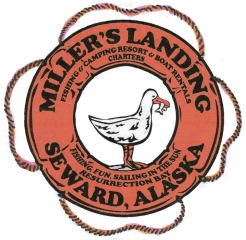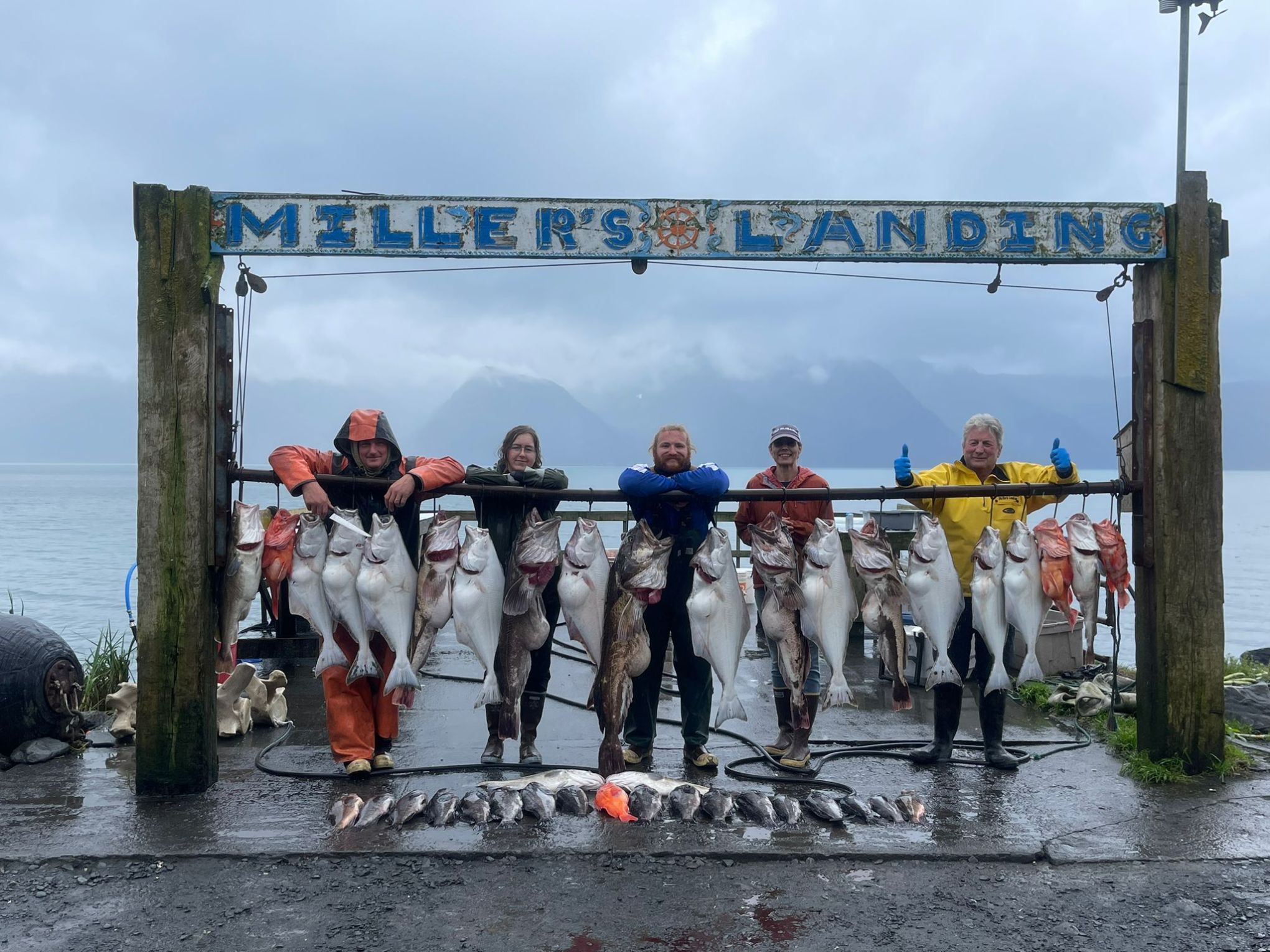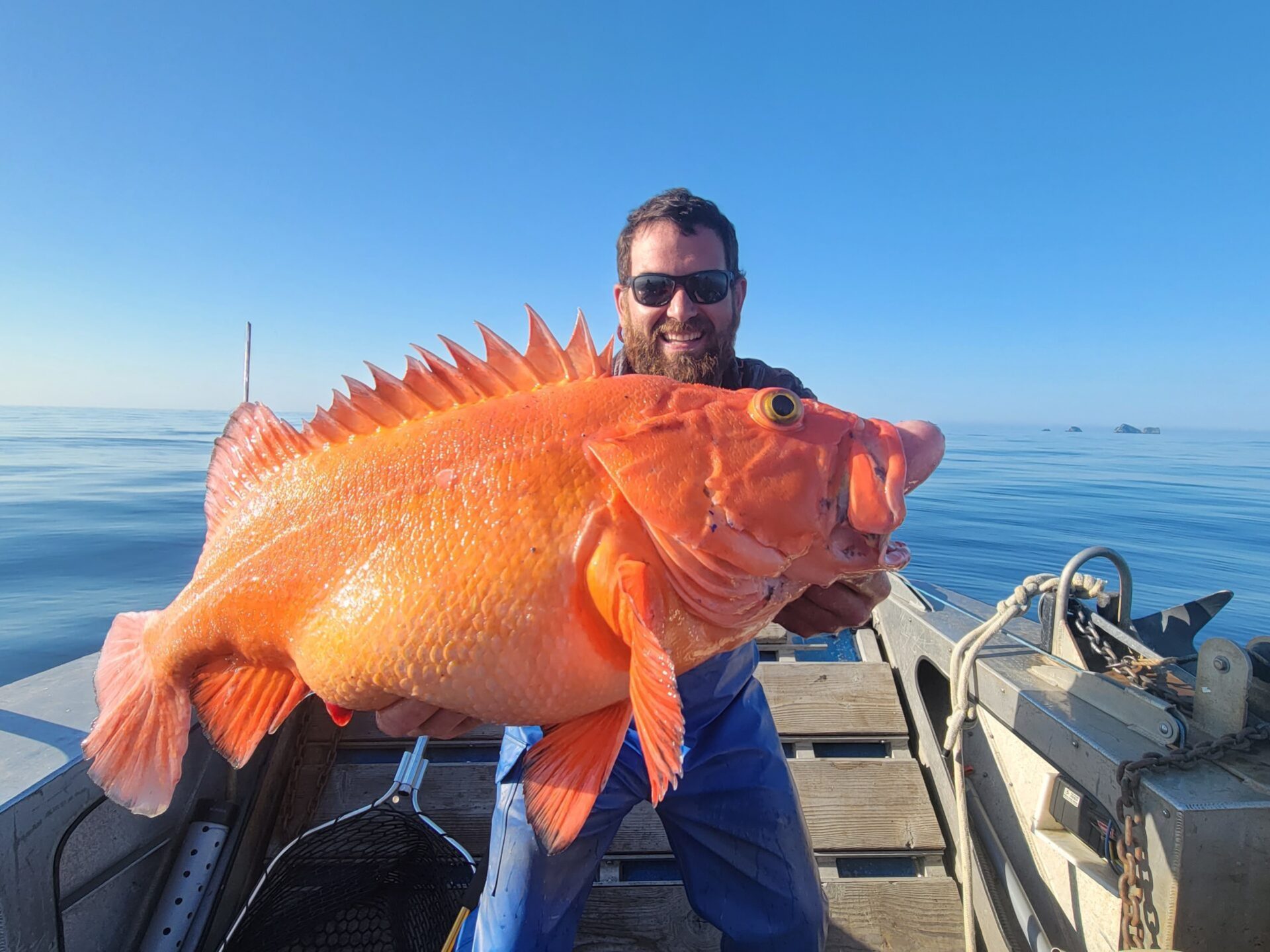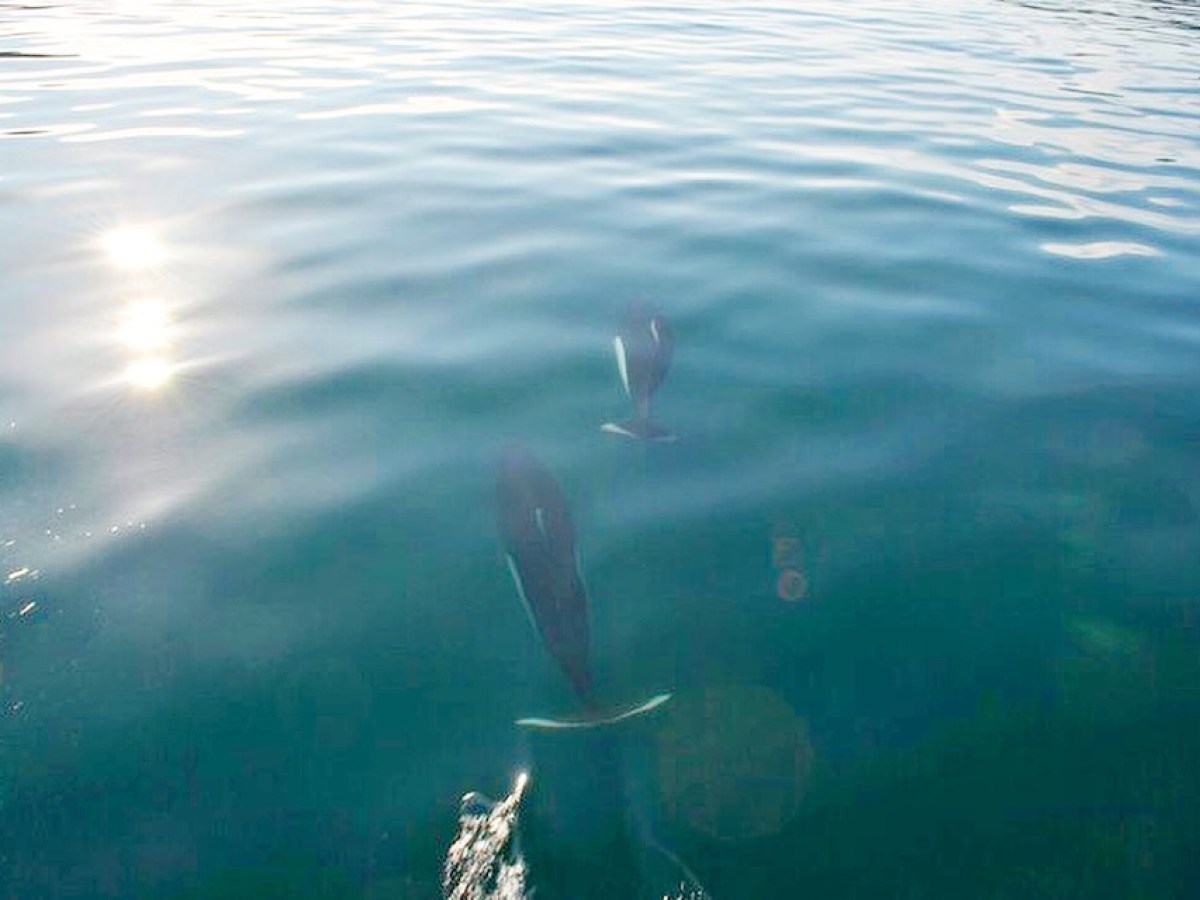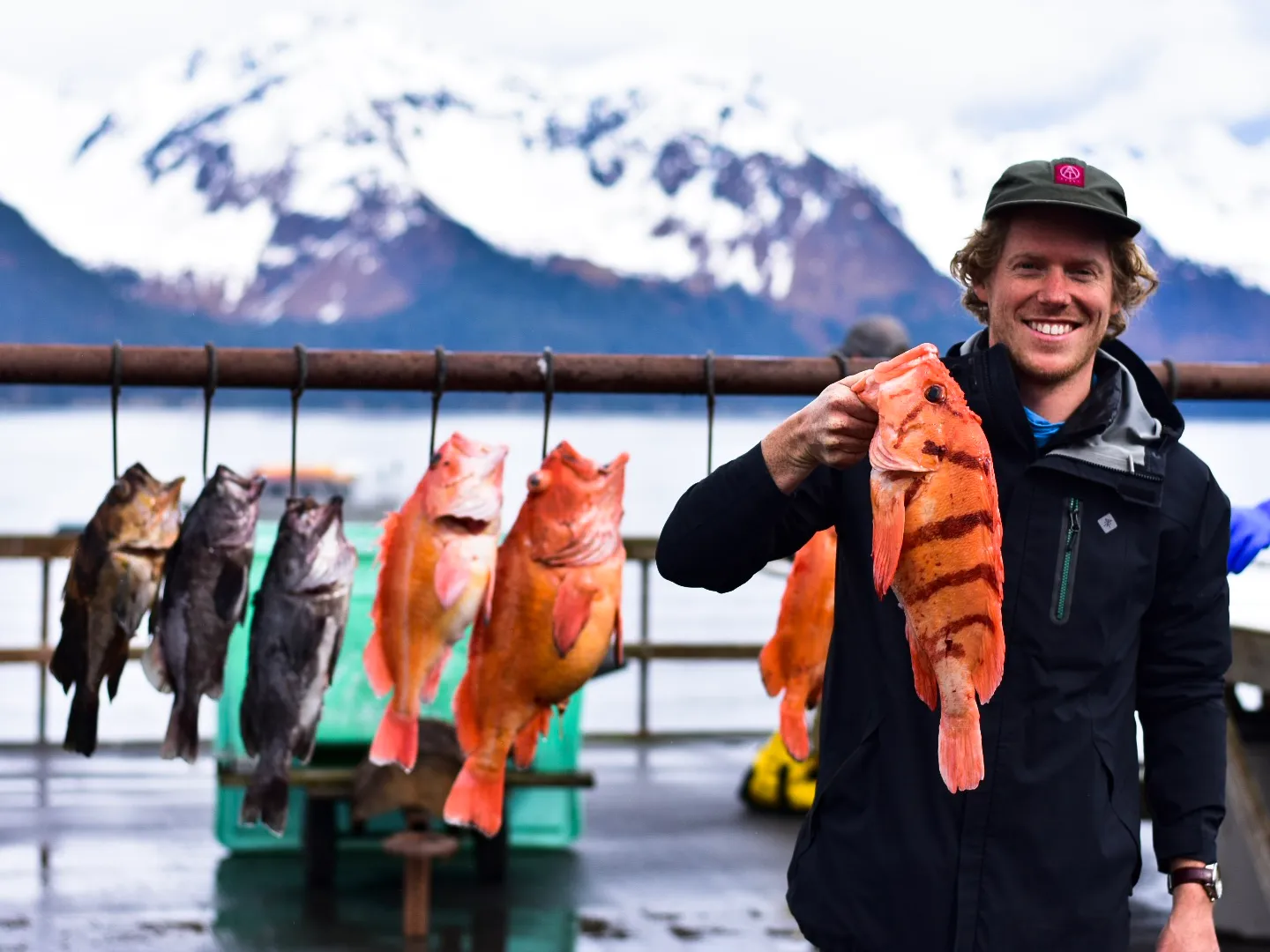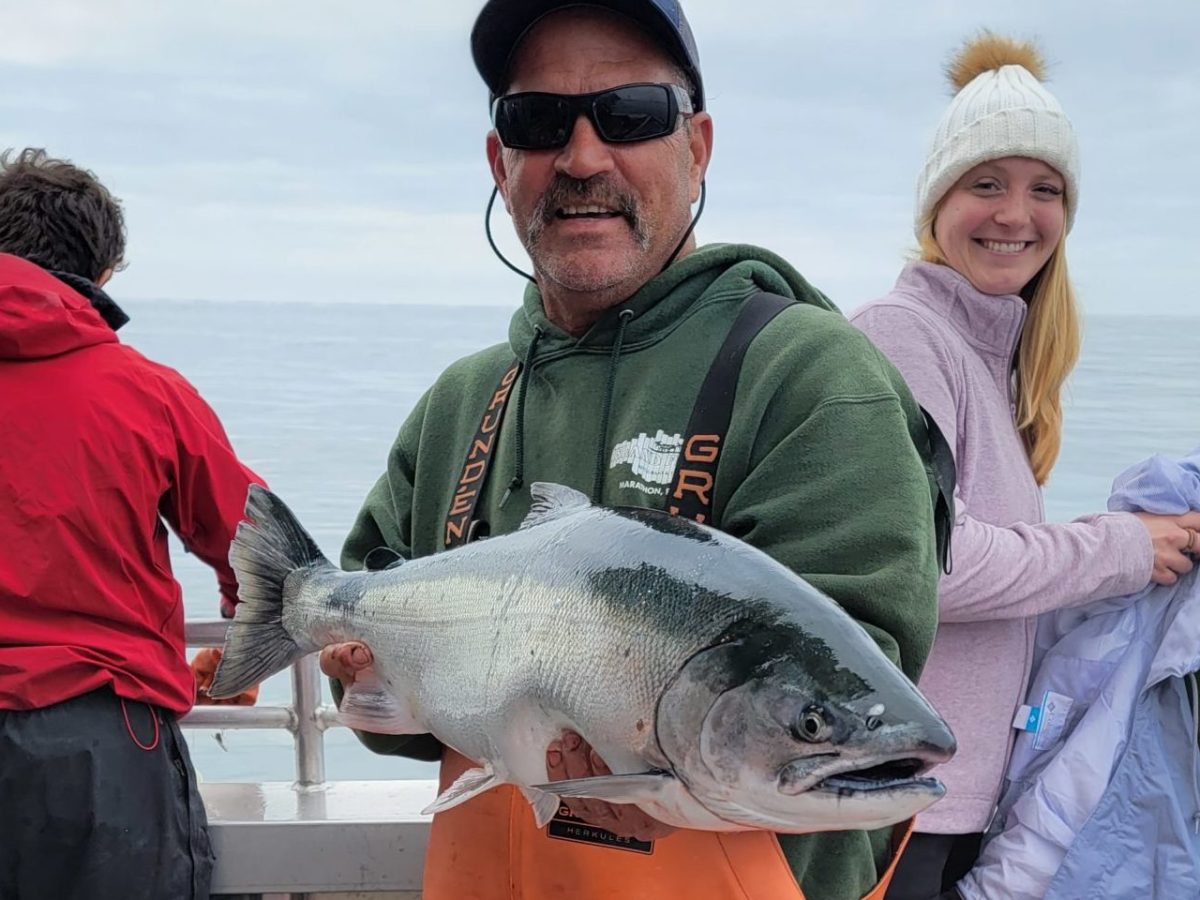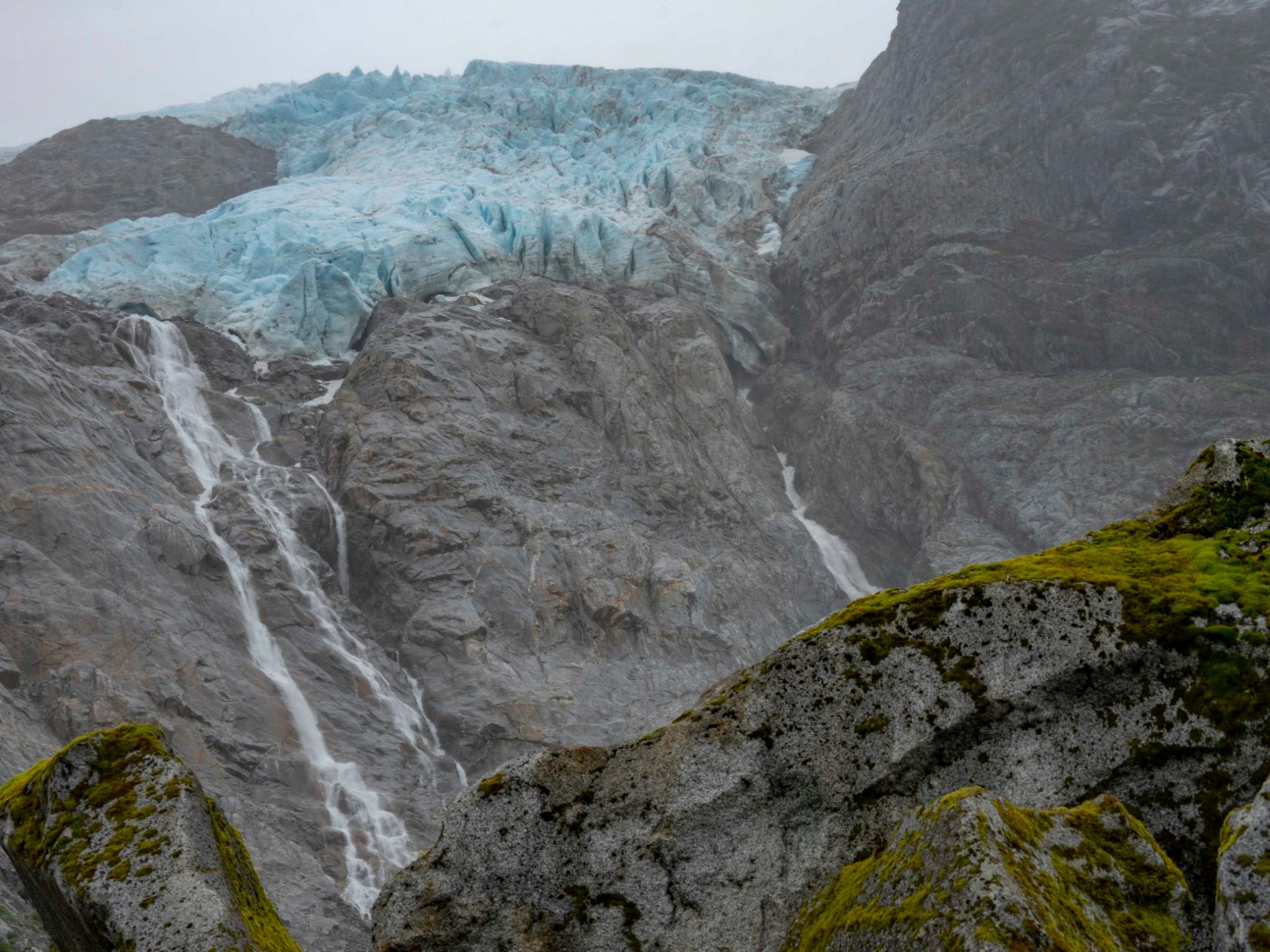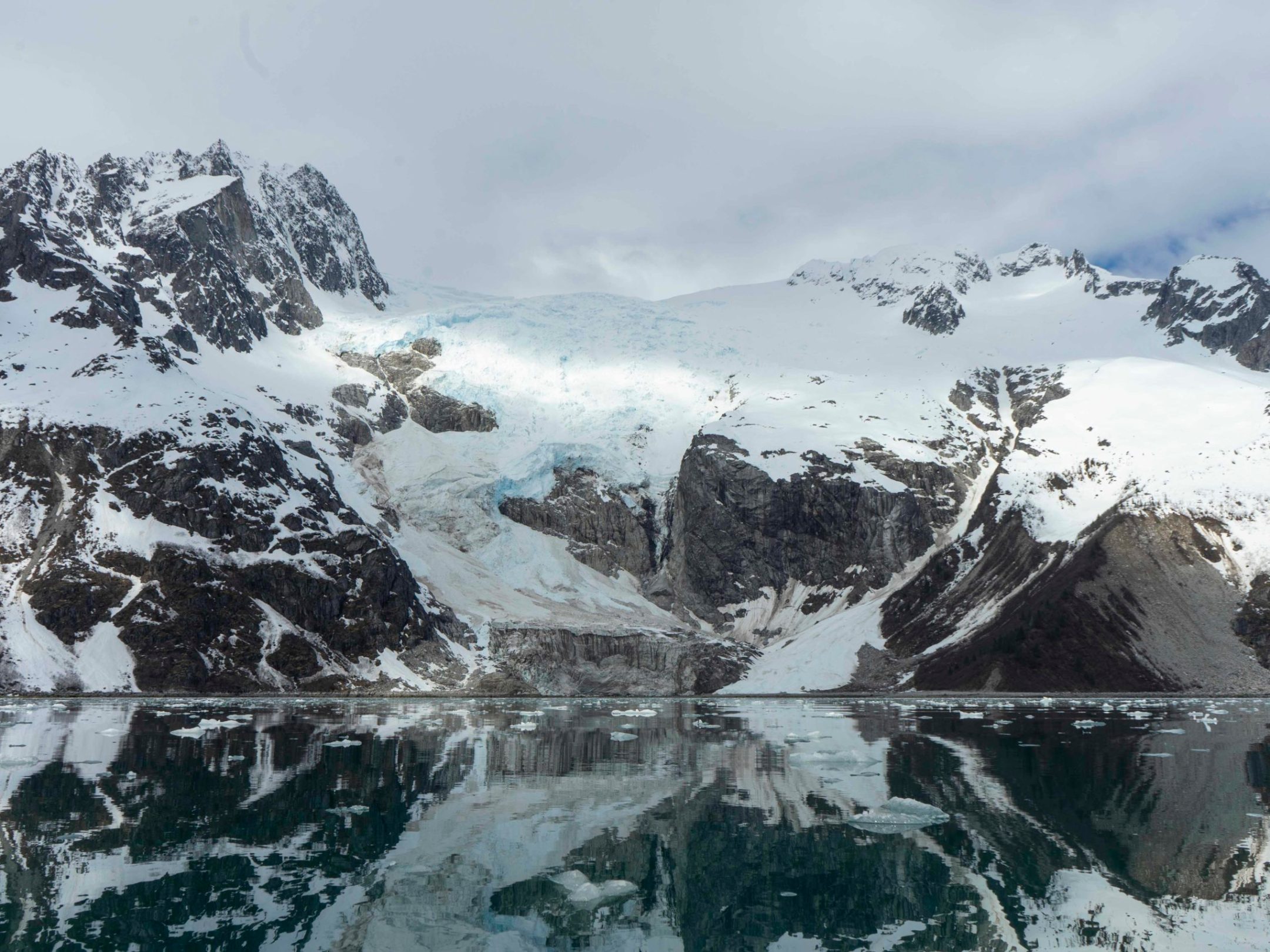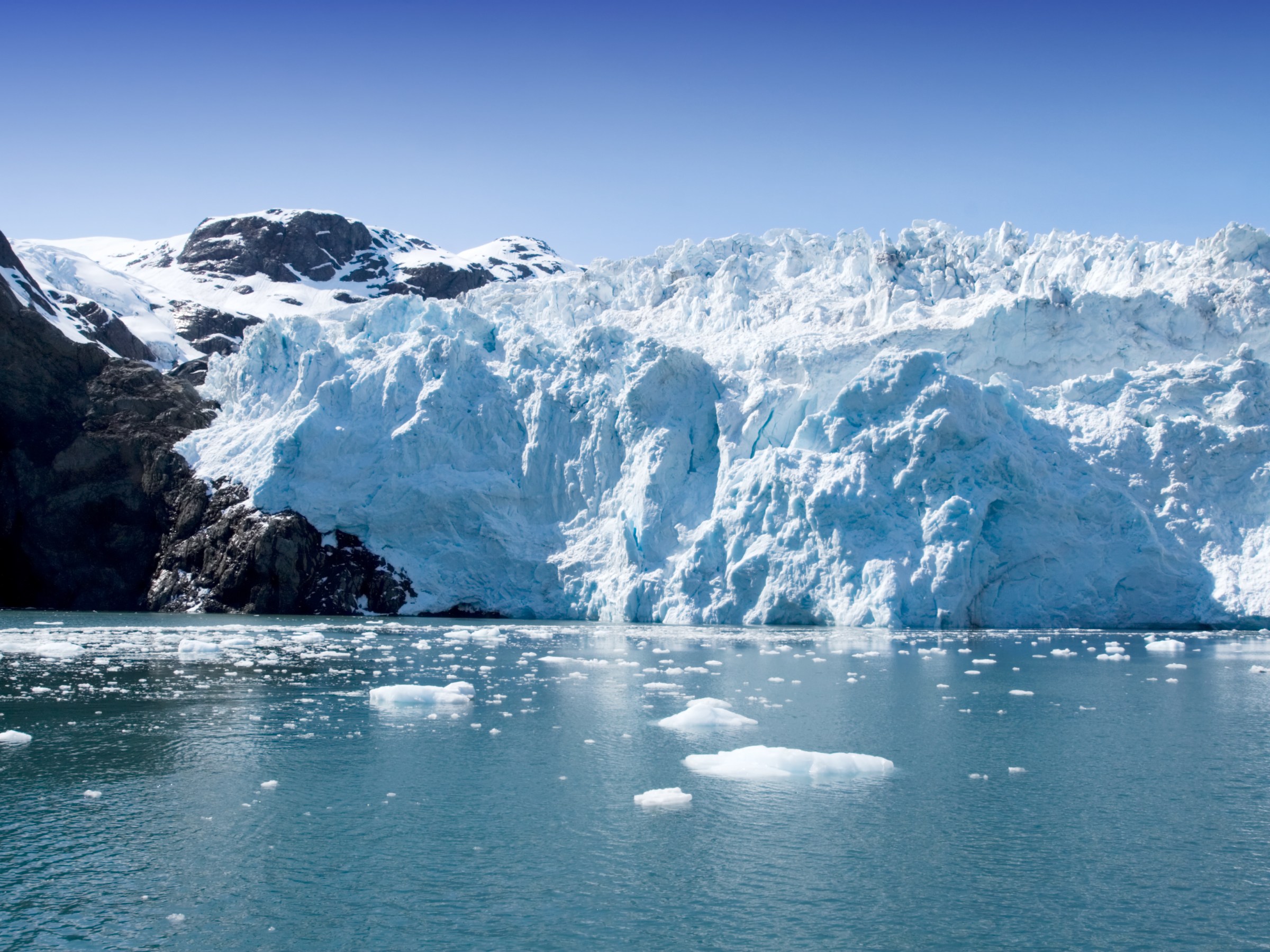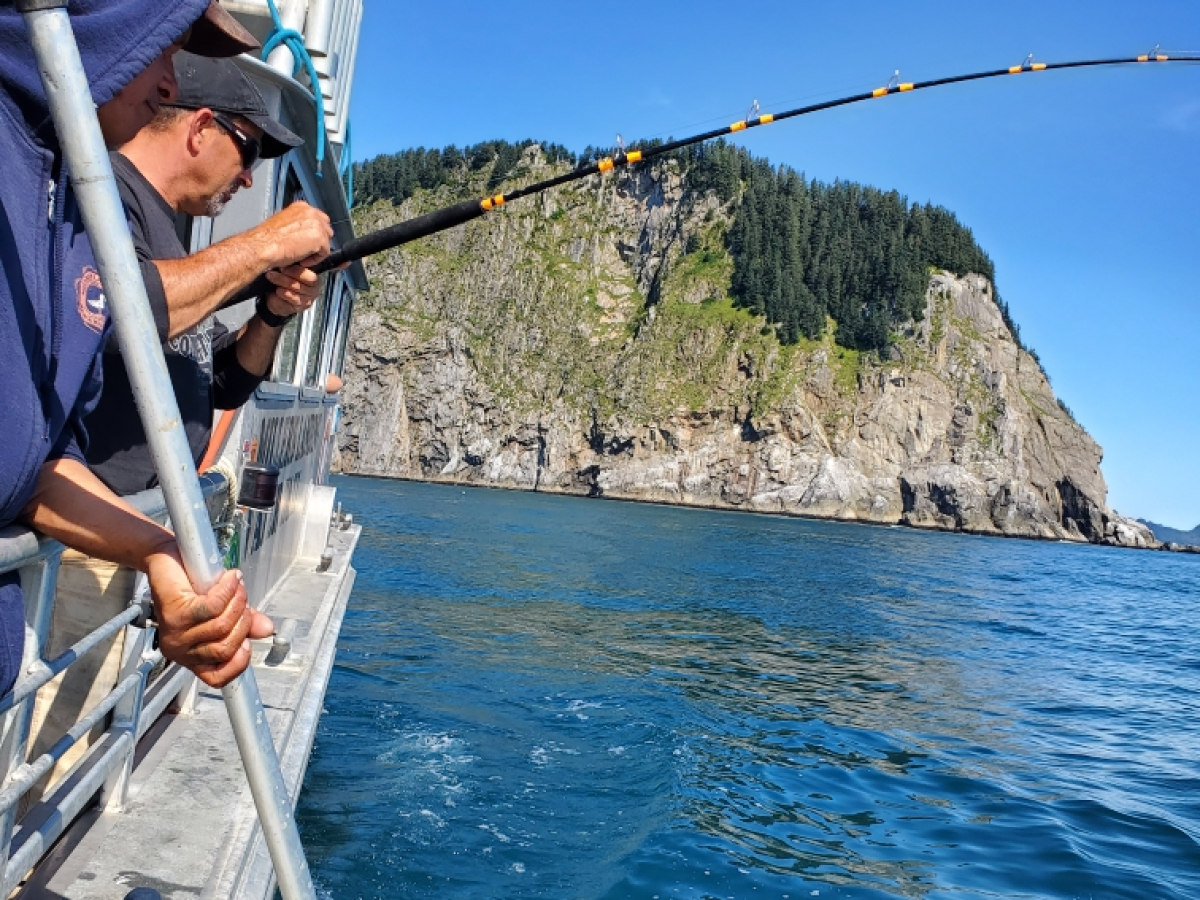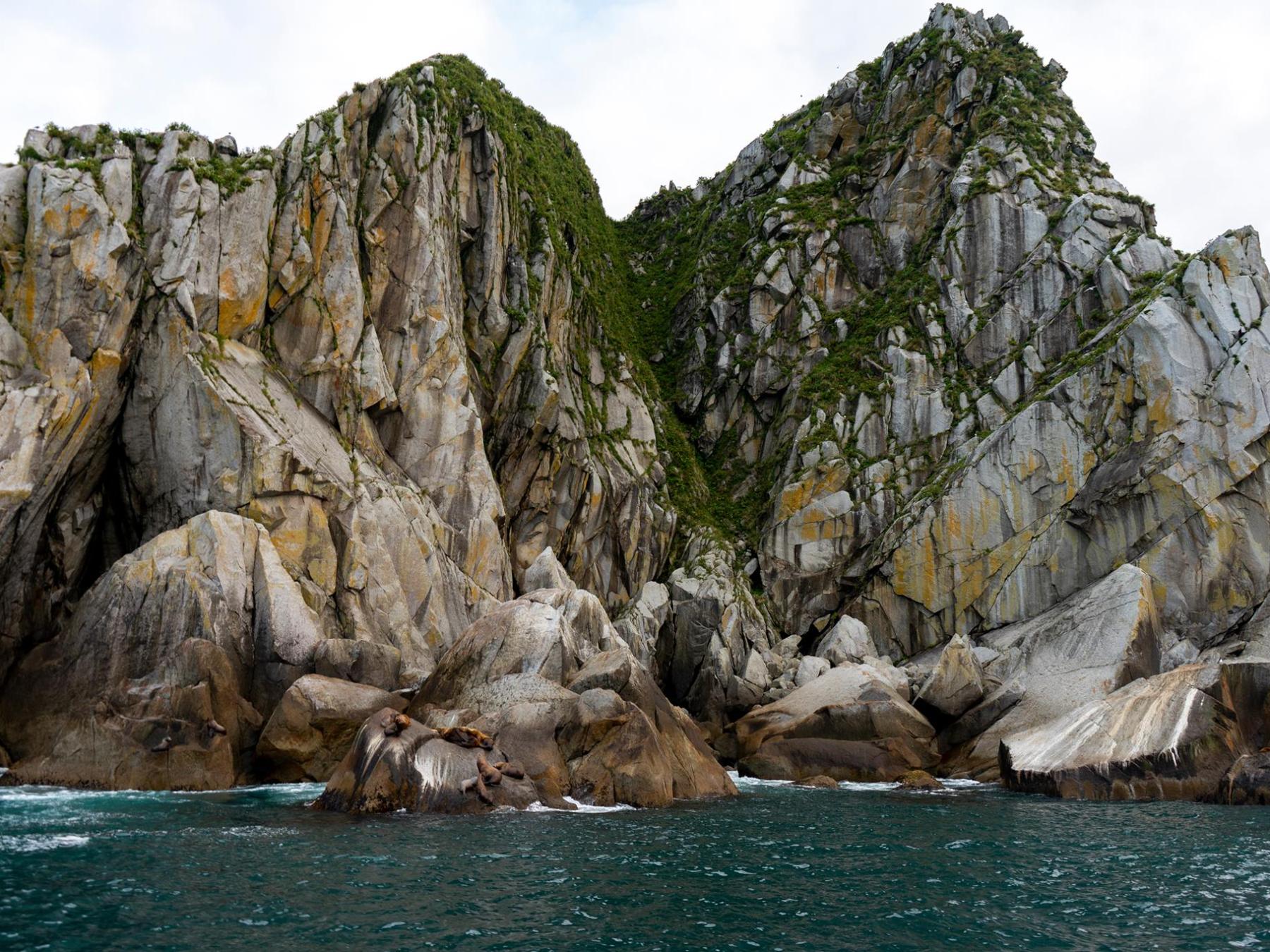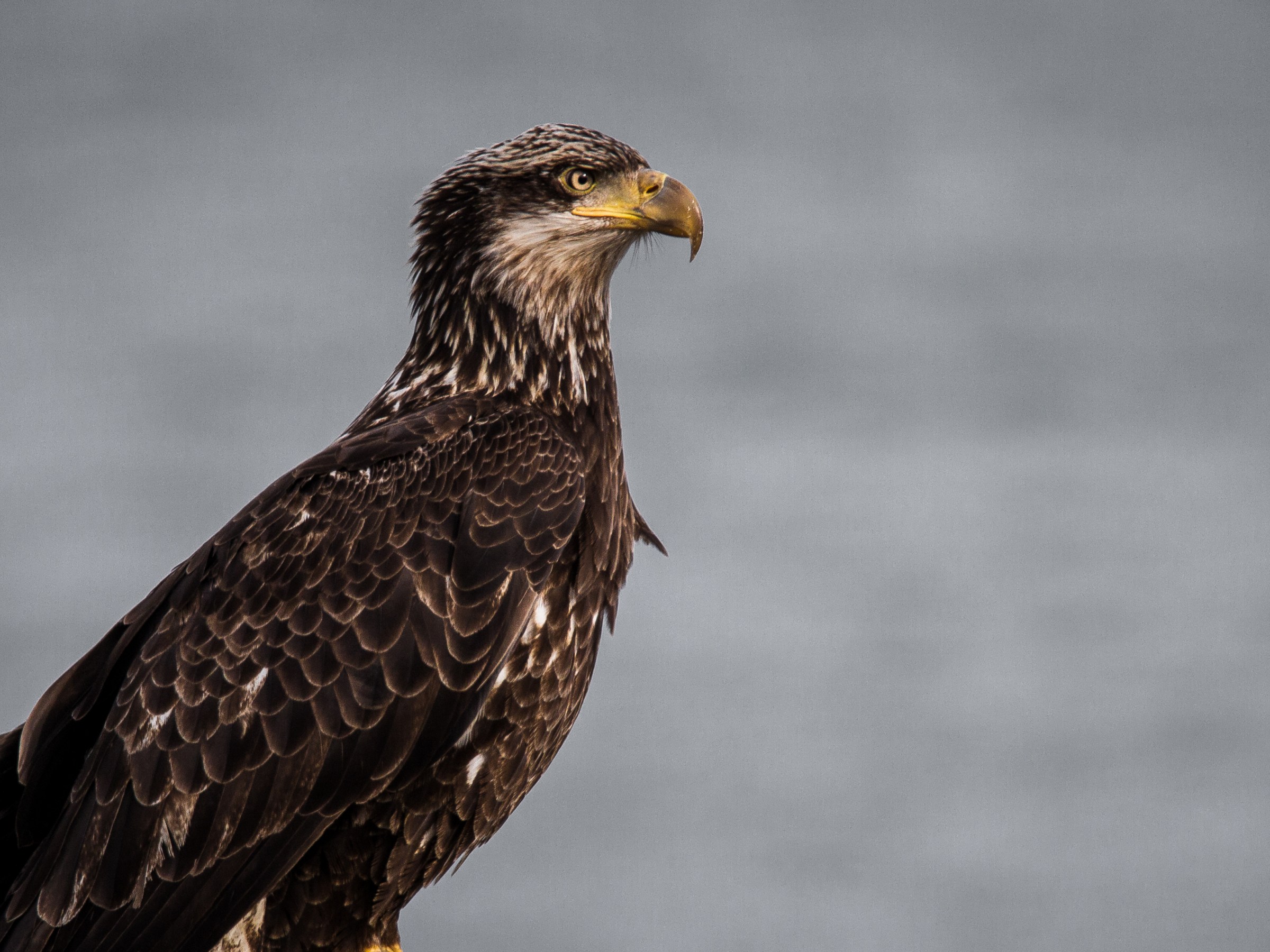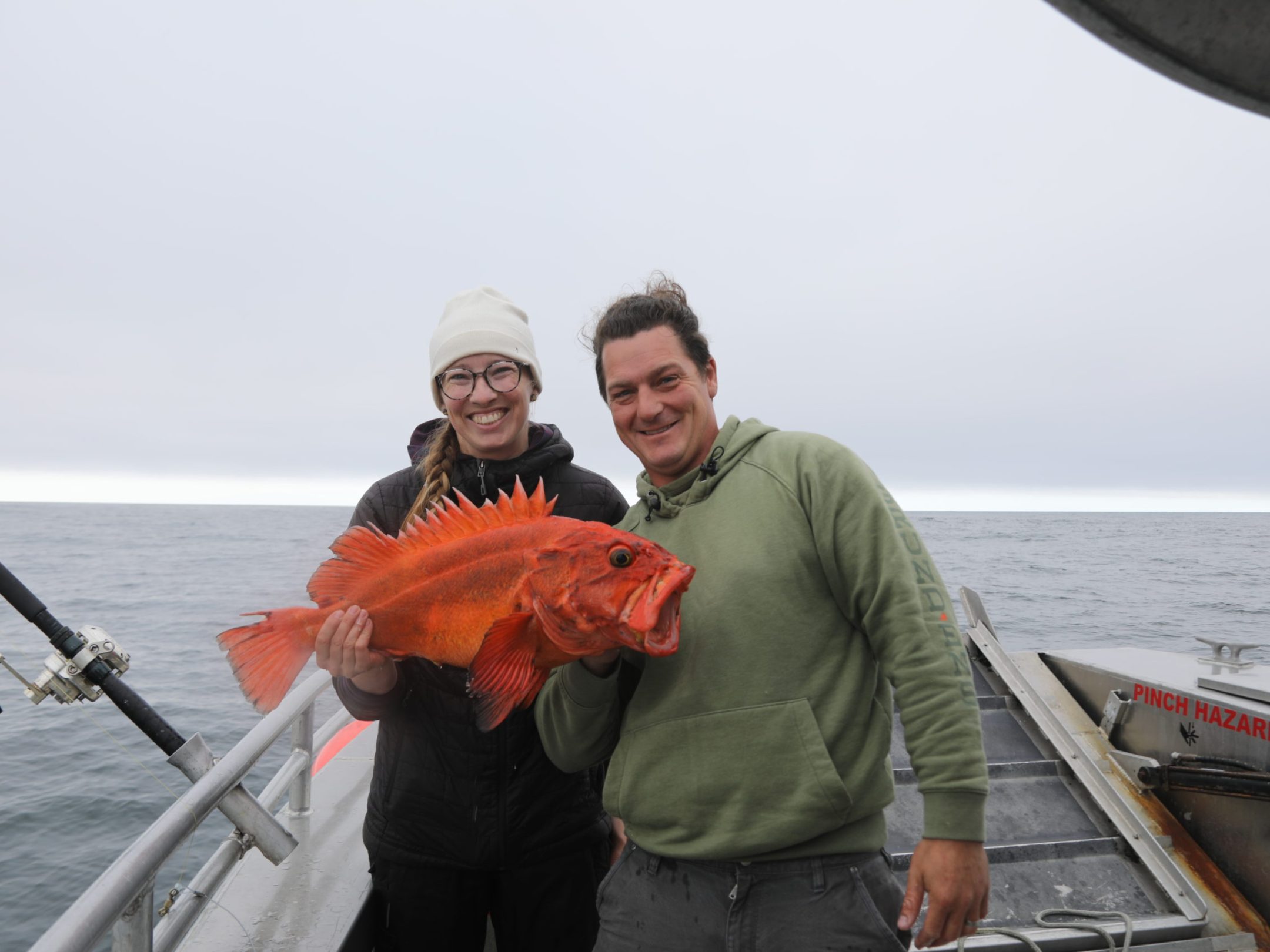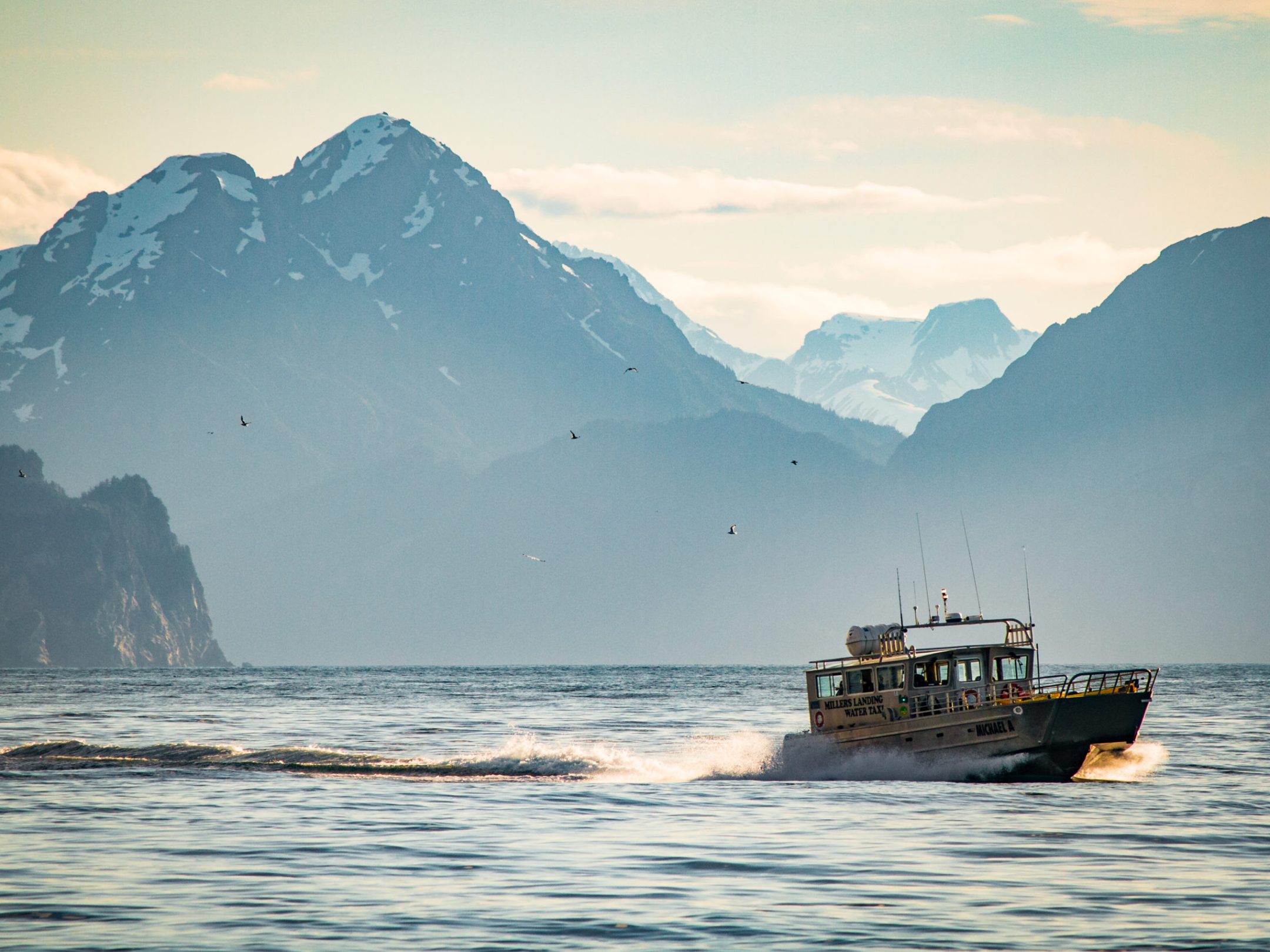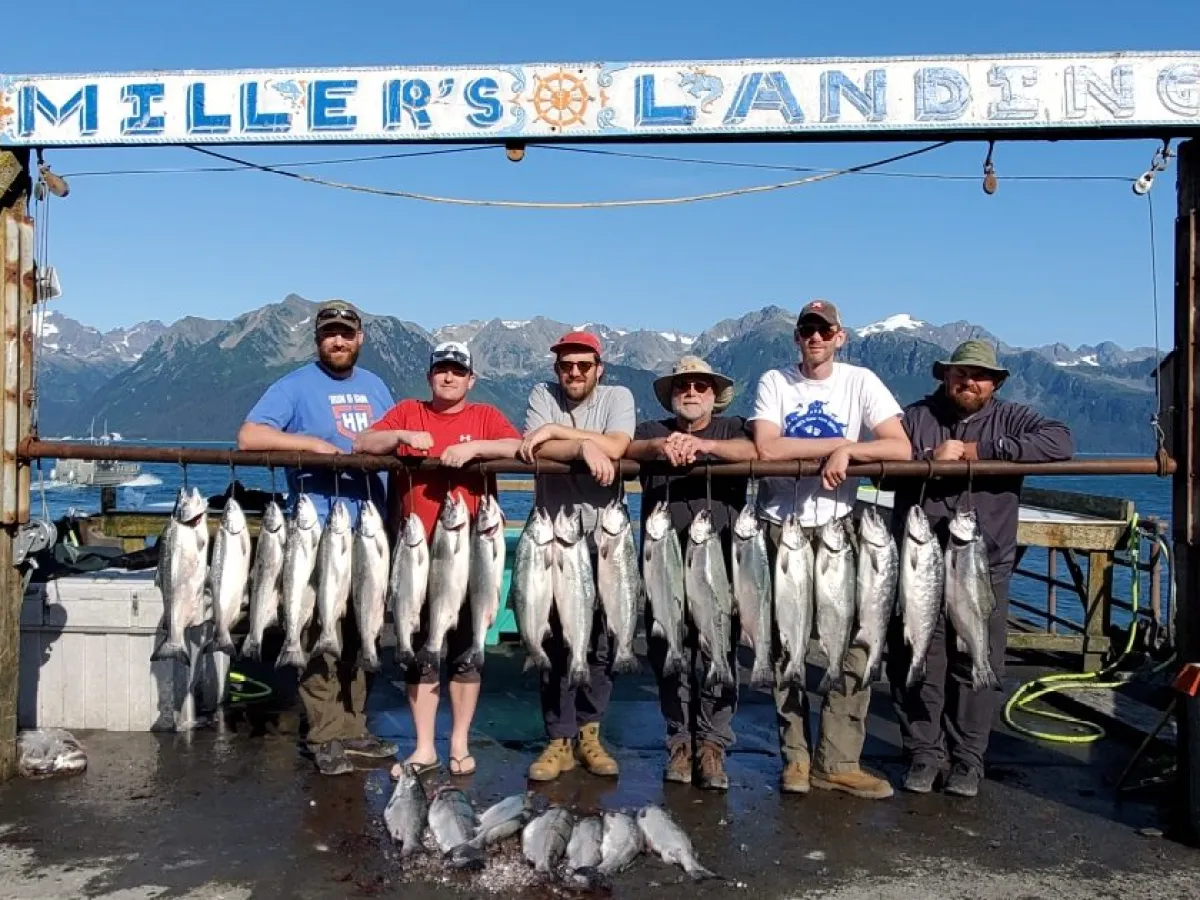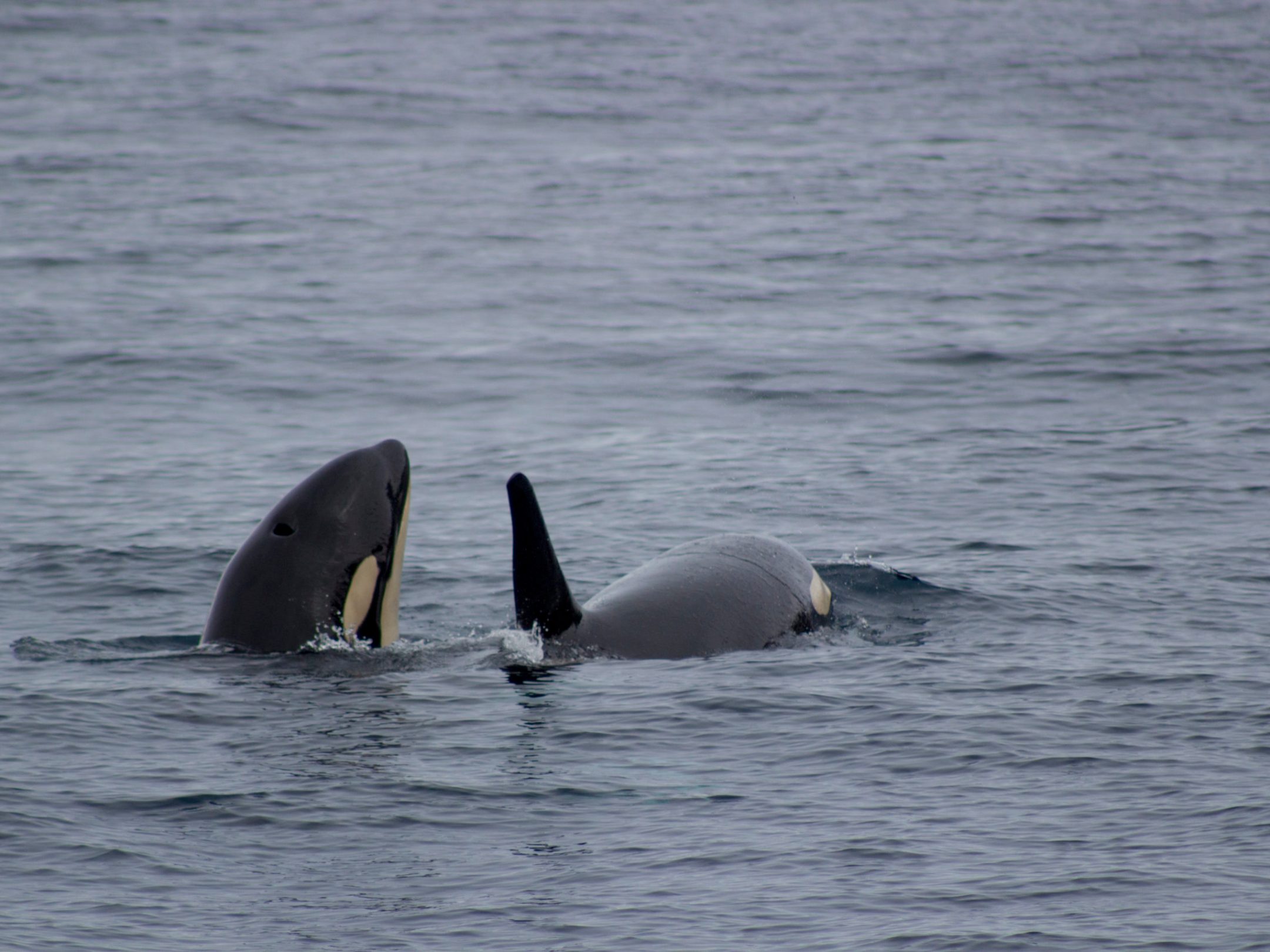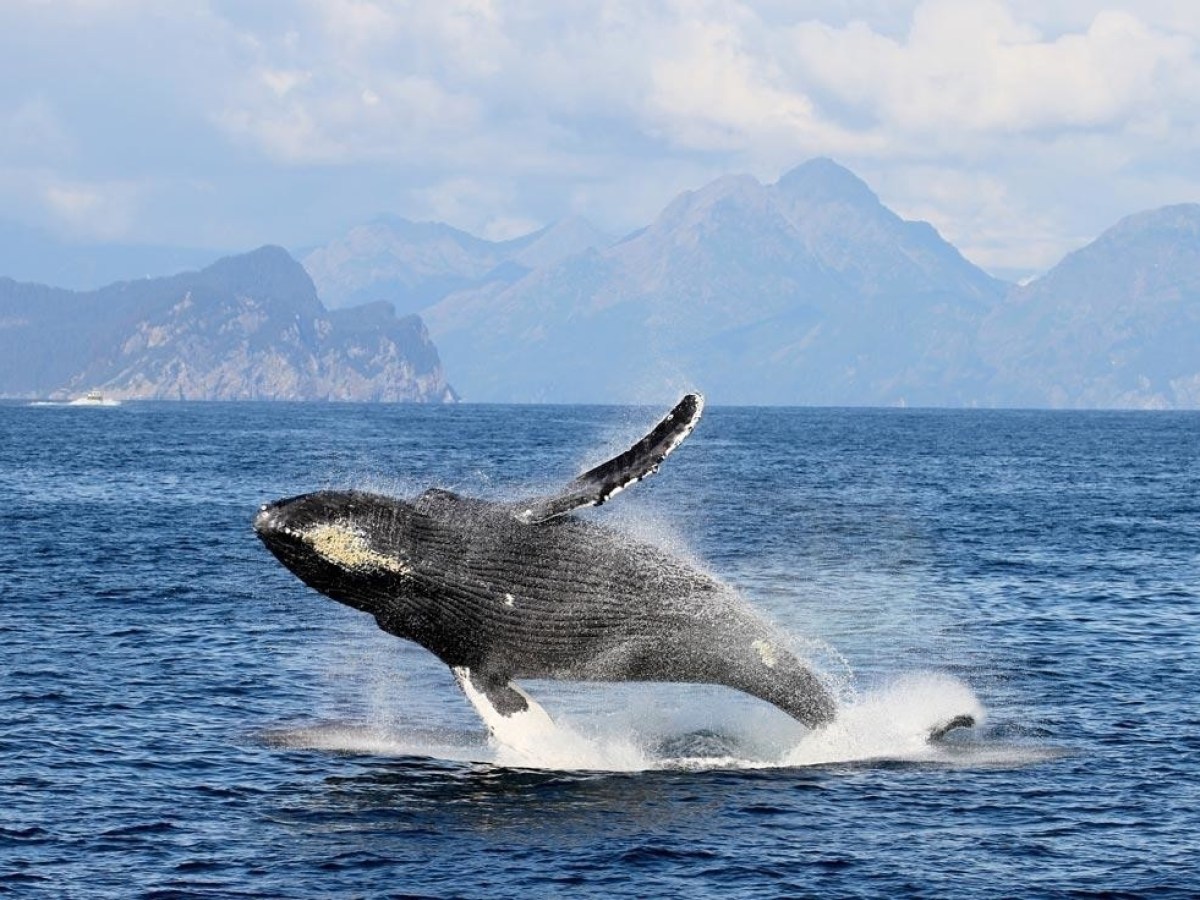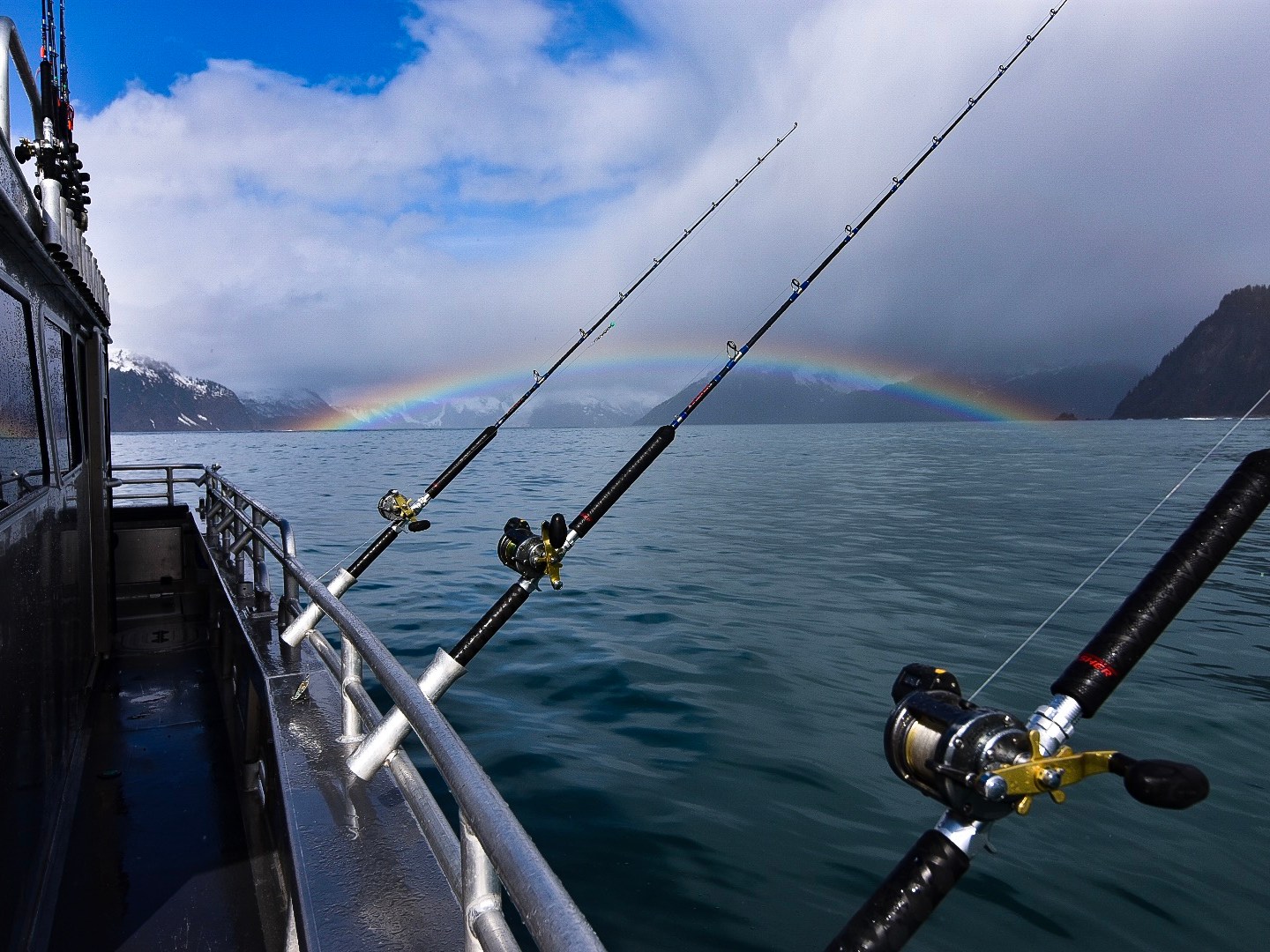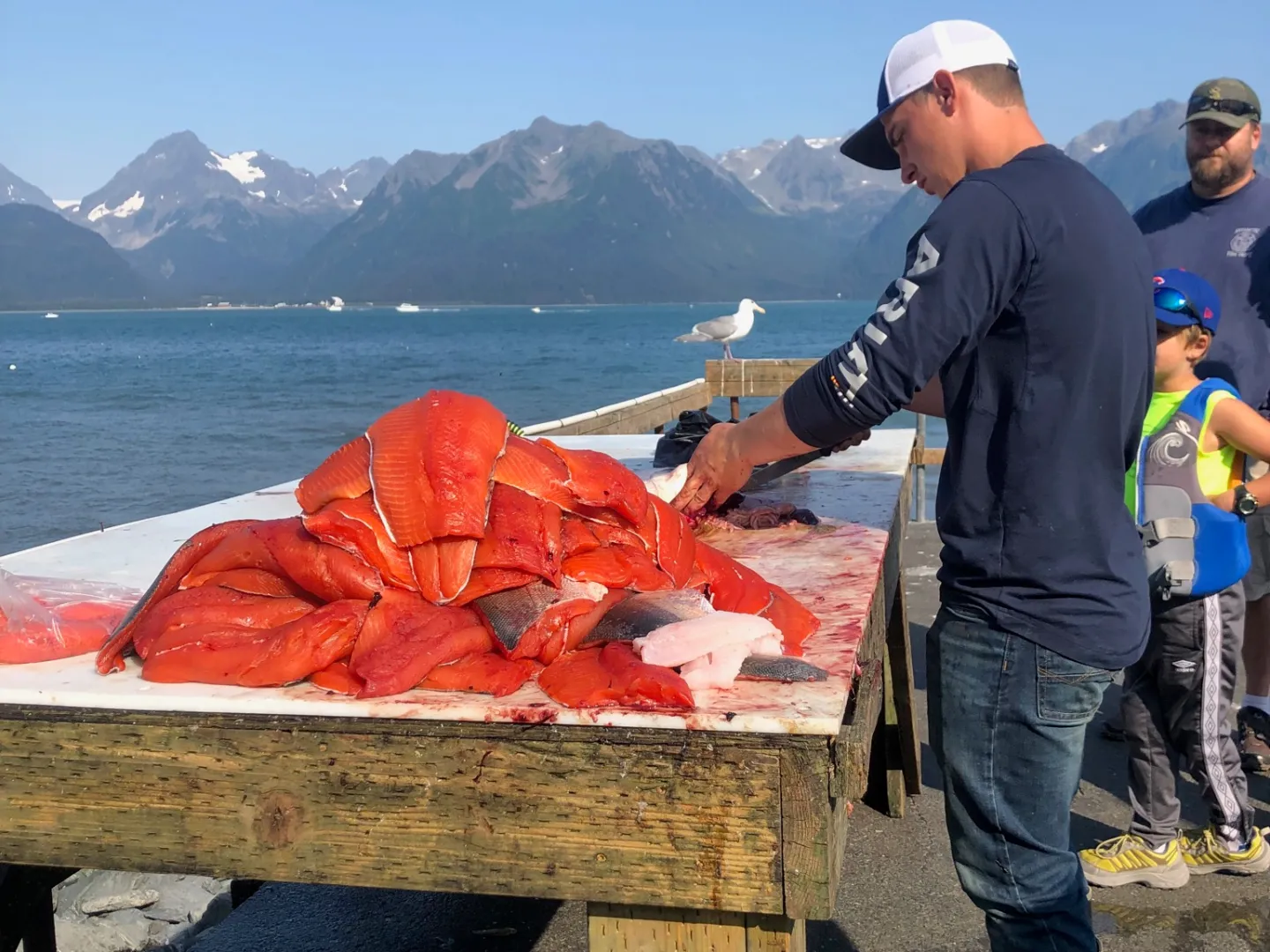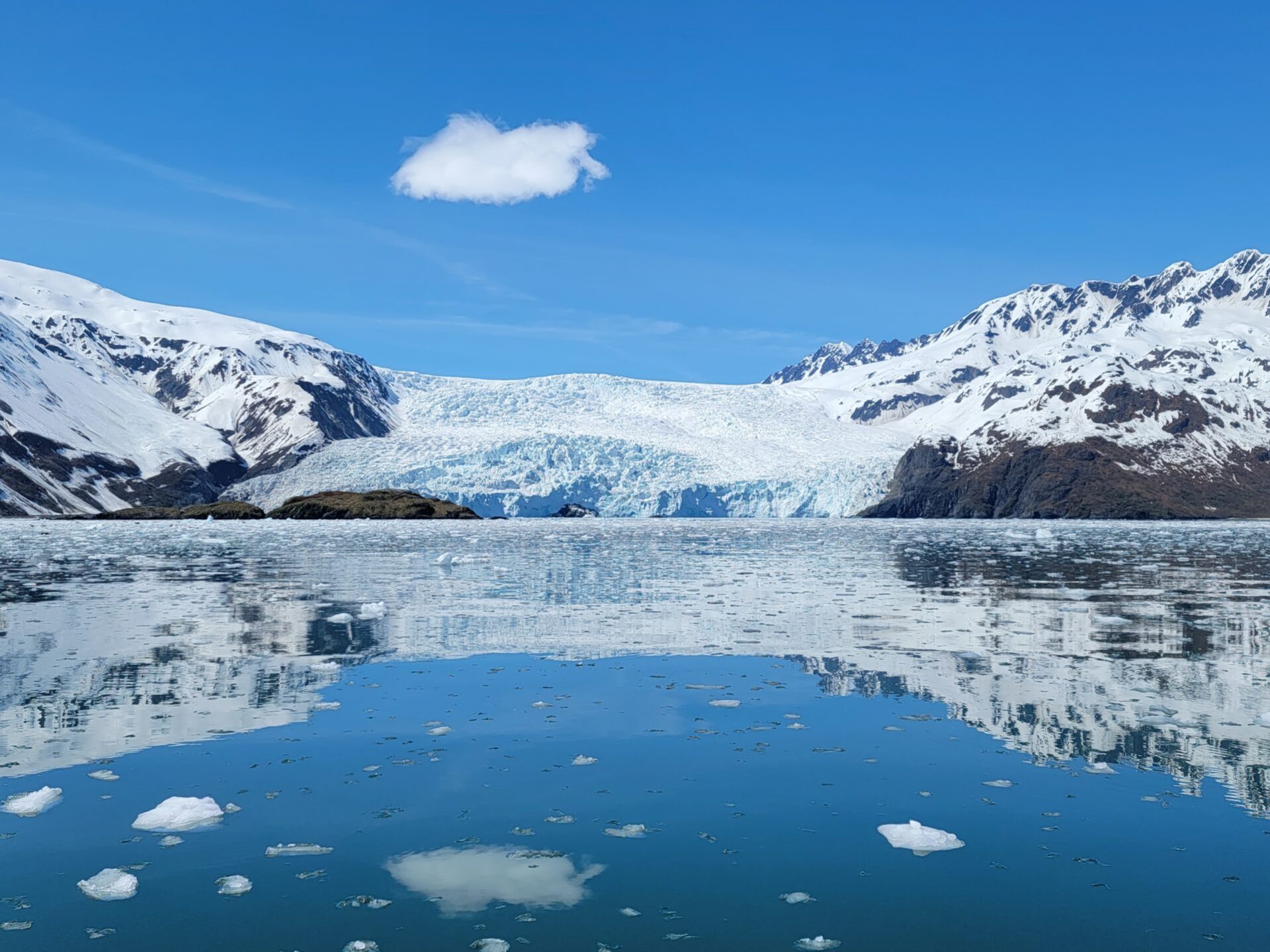Quick Details
6am - 6pm
Up to 12 people fishing, 6 more as passengers, exclusive use of the boat
$ 7200
6am - 6pm
Up to 10 people fishing, 6 more as passengers, exclusive use of the boat
$ 6300
Perfect Combination Trip in Seward, Alaska
Sightseeing areas include the Kenai Fjords National Park, and we go to the Chiswell Islands, famous for the many species of nesting seabirds, and the Aialik/Holgate or Northwestern Fjord Glacier areas of the majestic park. It is normal to see humpback whales, orca whales, harbor seals, stellar sea lion, Dall’s porpoise, and all manner of sea birds including puffin, cormorant, auklet, and muir.
Our boats are personal and purpose-built for these waters, and our captains are all professional fishermen with years of local experience touring the area. With departures at 6 a.m. daily, let us be your guide on a great sightseeing cruise in the Kenai Fjords National Park!
Fishing: We target halibut, ling cod (in season), black bass, and silver salmon (in season). Our goal is for each person to catch his or her limit of halibut or salmon, though these Seward fishing trips specifically take time to focus on wildlife viewing.
You’ll appreciate the personalized attention when your captain stops for photo opportunities and answers your questions about wildlife as we encounter whales, sea lions, bird rookeries, glaciers, and other marine wildlife. Please remember that the fishing time will be cut down considerably on these types of charters due to the traveling time for sightseeing. As a result, you should not expect to limit out in fish on the fishing and sightseeing combination charters… But what could be better than making a great day out of doing a little of both?
Fresh Catch in Alaska:
Pacific halibut are the most desired and largest fish of Alaska’s sport fisheries. They are plentiful in our waters throughout our fishing season, May through September. Sport-caught halibut usually range from 20 to 50 lbs., although larger fish are not uncommon. Generally, we fish between 100 and 450 feet, with an average of about 300 feet. It takes about an hour and a half to two hours to get to the best fishing grounds. We normally drift over our fishing areas and then pull up, move back over them and drift again. Although we do drop anchor sometimes, we don’t believe in anchoring and sitting on one spot all day.
Ling cod season opens July 1st. The minimum legal size is 35 inches. These fish can grow to over 80 lbs. The limit is one fish per day per person. Lings can be caught at almost any depth, but we catch most of them at 15 to 150 feet. Many people prefer the moist, succulent, white meat of ling cod to halibut.
Black sea bass is both easy and fun to catch. They are the most prolific of the rockfish species and are found near shallow rocky areas. Fishermen are limited to four black bass per day. These fish average about 4 to 5 lbs but range up to 12 lbs. We normally fish for them with medium weight spinning or baitcasting gear, using hoochies and herring or shrimp lures. These fish are great fun for young and big kids alike as they hit fast and furious. Sea bass (black bass) are delicious to eat.
Red snapper (yellow-eye rockfish) is one of the tastiest fish we have, and the limit is one per day. They are generally caught while fishing for halibut and ling cod. As you can see, there is a good variety of fish to catch during a halibut charter, and all are delicious to eat.
Silver salmon start their annual return to their freshwater streams in mid-July and August but can be caught in outer coastal waters starting in late June. Silver salmon average 8 to 20 lbs. and are a lot of fun to catch. The state record is 26 lbs. They put up a great fight on medium to light tackle and are exciting and fun to catch.
Depending upon the weather, tides, location, and time of year, we normally fish for salmon in water depths from a few feet near shore to 90 feet of water offshore. Usually “mooching” (drift fishing with bait) will provide the best results. Salmon are aggressive when feeding and provide some fast action. Our Captains are avid salmon fishermen with great knowledge and successful fishing techniques that they will share with you. Their years of local knowledge of our area give them an edge on finding the right combination of techniques and location for finding salmon and getting them to bite.
Fuel Surcharge:
Please know that fuel is the largest expense we have as charter operators. Our prices reflect the price of fuel at the time of publishing. In previous years we have not added a fuel surcharge, however, due to the volatile and uncertain nature of fuel prices, Millers Landing reserves the right to add a fuel surcharge to the trip rates.
A fuel surcharge will only be applied in the event of soaring fuel prices based on the price of fuel at the time of your charter. Should the price of marine fuel remain under $4.50 per gallon there will be no additional charge.
This will ensure that we are able to take you to the best fishing grounds without regard for the cost of fuel or how far we must travel. By adding a fee schedule we can mitigate that concern, and provide you the ultimate fishing experience.
| PRICE OF FUEL | FUEL SURCHARGE |
|---|---|
| UNDER $4.50 PER GALLON | NO SURCHARGE |
| $4.51 – $5.00 PER GALLON | $10 PER PERSON PER DAY |
| $5.01 – $6.00 PER GALLON | $20 PER PERSON PER DAY |
| $6.01 – $7.00 PER GALLON | $30 PER PERSON PER DAY |
| $7.01 – $8.00 PER GALLON | $40 PER PERSON PER DAY |
More Information
Get ready for a day full of stunning views, good company and an authentic Alaskan fishing experience that will leave you with several great fishing stories. Departure is at 6 a.m. daily. Using our WiFi, you can purchase your Alaska fishing license here We have free parking. We even pick you up right from the shore in our specially designed boats! Our custom catamaran, the Fox Willie often drops off kayakers in the national park — Sometimes the fox returns closer to 6 pm instead of 5 pm — This does not cut into your fishing time, nor does it affect where we fish.
Below is more information about our itinerary, fishing regulations, and competitions.
-
Fishing regulations change each year. For the most up-to-date information, please see the ADF&G website, at www.adfg.alaska.gov and the Southcentral Region, specifically linked HERE.
-
Buy your fishing and hunting license online at https://www.millerslandingak.com/wp-content/uploads/sites/3698/2018/05/badge-alaska-fish-game.png?auto=compress%2Cformat& these can be printed out ahead of time, but must be on your person whenever you fish!
*2020 Fishing Regulations Online – Full Sport Fishing Regulations for State of Alaska
*2020 Fishing Regulations Online – Sport Fishing Regulations for Seward Area (North Gulf Coast) -
The Seward Halibut Derby has been discontinued until further notice.
The Seward Silver Salmon Derby runs the second Saturday of August every year and is not only Alaska’s oldest fishing derby, but it’s also the highest-dollar cash prize fishing derby in Alaska. You can buy tickets right at the store, and it’s a blast!
-
Make sure you have comfortable shoes and warm layers for fishing outside on the bow, good rain gear is also essential. The boat is heated inside with comfortable seating so don’t worry, there is always a space for you to crash. We also recommend lunch, snacks and water.
Don’t forget medical necessities, and if you get seasick and are using Dramamine, take it an hour before departure.
-
Enjoy world-class fishing for all species using Thrasher and Seeker rods, Avet and Shimano reels, and hand-tied gear using top-end components! Read more about our equipment here!
We use the Thomasea for groups of 6 or less, and the Fox Willie for groups over 6 people. Read about them here: Our Vessel Fleet | Miller’s Landing in Seward Alaska (millerslandingak.com)
-
- A $10 cancellation fee is imposed for all reservations canceled.
- Cancellations must be received by email only to reservations@millerslandingak.com. The cancellation notice date is the date the email was received at reservations@millerslandingak.com. Phone cancellations will not be accepted.
- Cancellations received by email 30 days prior to the first day of the reservation are charged a $10 cancellation fee and you will receive a refund of 90% of the total amount of the reservation.
- Cancellations received by email 15 to 29 days prior to the first day of the reservation are charged a $10 cancellation charge and you will receive a 75% refund of the total amount of the reservation.
- Cancellations received by email 14 days to zero days prior to arrival are charged a $10 cancellation fee and you will receive a 50% refund only if we are able to rebook your camping, cabin, fishing, kayaking, water taxi, shuttle, lunch, or activity. If we are not able to rebook your reservation, then no refunds will be issued and you will also be charged a $10 cancellation fee to your credit card.
- In some situations, a raincheck worth 75% of your reservation may be issued at the discretion of Miller’s Landing management instead of the applicable cancellation charge. If this option appeals to you, please suggest this at the time of cancellation. Rainchecks are good for one year and may be used for activities, camping, or lodging owned by Miller’s Landing or towards the cost of hats, T-shirts, gifts, etc. sold in the Miller’s Landing store or items sold online. For items purchased online, the customer is expected to pay for the cost of postage. Rainchecks may NOT be transferred to another person.
- A 100% refund will be issued for any activity that was canceled due to weather by Miller’s Landing. Miller’s Landing reserves the right to determine weather cancellations. Rain does not constitute a cancellation.
Please note: Miller’s Landing encourages only guaranteed prepaid reservations. Unlike many other states, Alaska has a very short tourist season, which can make it difficult for us to rebook when we have cancellations without ample notice.
If you are booking a charter and lodging and your charter, water taxi, or kayaking is canceled due to weather, you are still responsible for the lodging or camping reservations and the normal cancellation policy applies. All of our activities are possible during rain, so rain does not constitute a cancellation. Miller’s Landing is not responsible for vehicle break downs, personal emergencies, flight delays, health issues or other unforeseen hardships. We will try very hard to work with you, but the cancellation policy will need to be applied if we cannot issue a raincheck or find an alternative solution that appeals to both parties.
Please understand that Miller’s Landing also incurs a hefty financial merchant fee from our bank for the cost of charging your credit card and again for the cost of refunding it, and there is also a cost involved for the time involved in processing and refunding your reservation in employee costs. Our goal when taking your reservation is to have a solid, guaranteed prepaid reservation. We strongly discourage the practice of making reservations without having an airline ticket or making tentative reservations. Thank you for your understanding.
